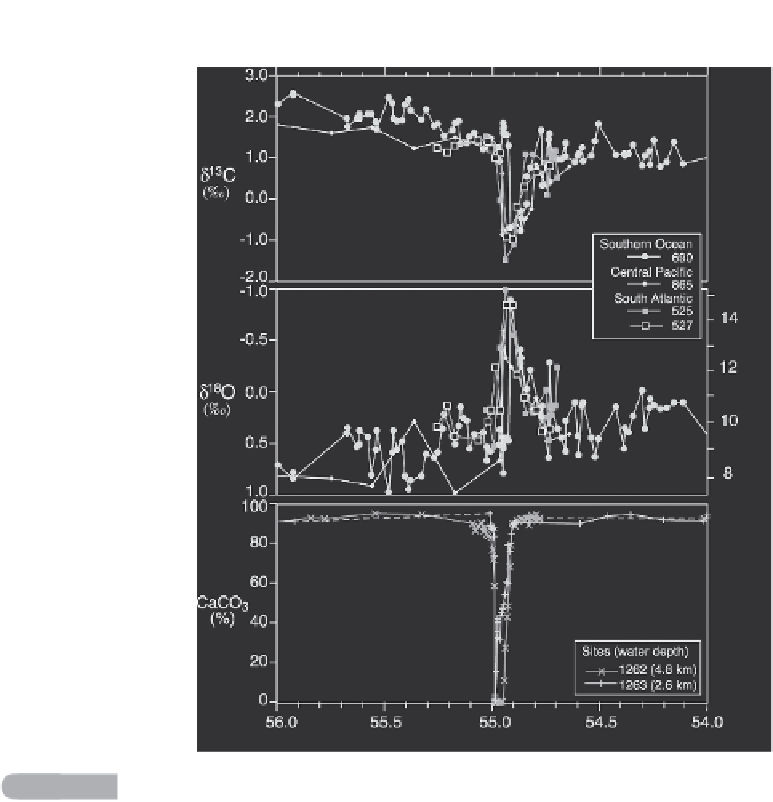Geoscience Reference
In-Depth Information
(a)
(b)
(c)
Time (mya)
Fig. 3.4
(a)TheIETM/PETMCIEasrevealedbytheanalysisofbenthic(bottom-dwelling)foraminifera(seeZachos
etal.,2003fordetails).(b)
18
OclimateproxytemperatureanalysisofIETM/PETMstrata(seesection2.2.1).(c)
Carbonate (CaCO
3
)contentofsedimentsintwocoresfromthesouthAtlantic(Zachosetal.,2004,2005).All
threepanelsreproducedwithpermissionfrom
ClimateChange2007:ThePhysicalScienceBasis.WorkingGroupI
ContributiontotheFourthAssessmentReportoftheIntergovernmentalPanelonClimateChange
figure
CambridgeUniversityPress.
this is also not seen. Alternatively, the burning of a massive peat deposit could have
caused the CIE. This last could be a possibility but the source of this deposit has not
been found. Deep (abyssal) marine sediments could have provided more than enough
carbon but disruption of these on a planetary scale would have provided too much,
and in any case would have also disrupted continental shelf methane hydrates. Other
proposals include a volatile-rich asteroid impact, but again there is no evidence for
this, nor an iridium layer that is associated with other large, global climate-changing
asteroid-impact events. This leaves fossil fuel-type sources, marine methane hydrates
(clathrates) or volcanic gases as source candidates.
In 1995 Gerry Dickens and colleagues from the University of Michigan proposed
that only geological methane gas had enough light carbon (
12
C) to produce the early
Eocene CIE. They proposed that a belch of methane escaped from methane hydrates
(methane clathrates) in continental slope sediments as the Earth warmed during the

Search WWH ::

Custom Search